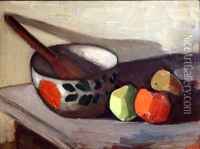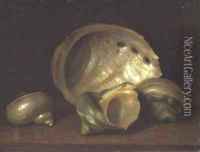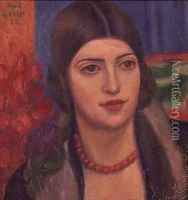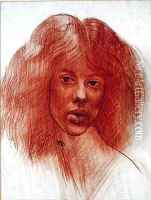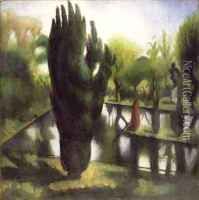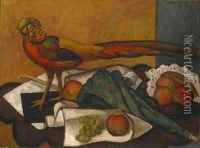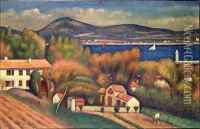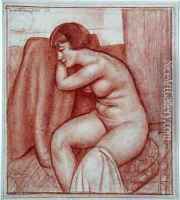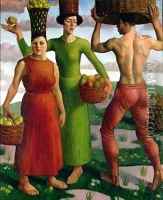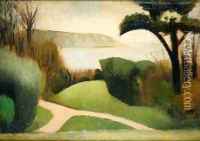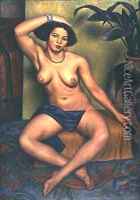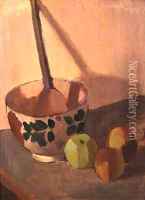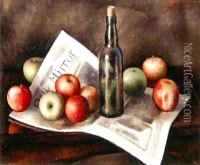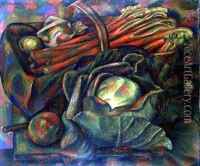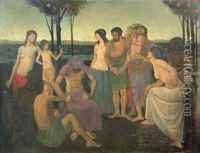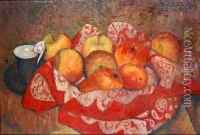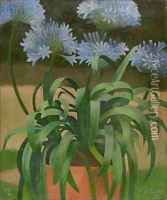Mark Gertler Paintings
Mark Gertler, born on December 9, 1891, in London, was a notable British painter known for his distinctive modernist works that often encapsulated the tension and anxieties of his era. He was the son of Polish-Jewish immigrants, and his humble beginnings did not hinder his early interest in art. Gertler attended the Slade School of Fine Art in London from 1908 to 1912, where he was contemporaries with artists such as Paul Nash, Stanley Spencer, and Dora Carrington, with whom he had a tumultuous relationship.
His early work was characterized by bright colors and bold compositions, often focusing on still lifes, portraits, and occasionally Judaic themes, reflecting his own background. As his style evolved, Gertler became known for his highly stylized, almost geometric figures, and he became a leading figure in the London Group, an association of artists interested in exploring new avenues in art.
The outbreak of World War I greatly affected Gertler, as did his personal struggles with mental health. His pacifist stance during the war was reflected in his works, most notably in 'Merry-Go-Round' (1916), one of his most famous paintings, which portrays the senseless horror of war. Throughout the 1920s and 1930s, he continued to paint, though his work received mixed reviews and he struggled financially.
Gertler's personal life was fraught with difficulties, including his volatile relationship with Carrington and his declining mental health. His struggles ultimately led to his suicide on June 23, 1939, at the age of 47. Despite his tragic end, Gertler's contribution to British modernism remains significant, and his works are held in many major collections, including the Tate Gallery in London.
